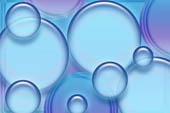
Purpose
To explore how one can create bubbles that are long lasting or permanent.
Additional information
None
Sponsored Links
Required materials
- Measuring device that will measure out CC’s of liquid (most likely will be a syringe – do not use one with a needle)
- Tablespoon measuring tool
- 1 gallon distilled water (you will not use it all)
- Stove
- Pan
- Wooden, plastic or metal spatula or spoon to stir
- Thermometer that reads in Celsius degrees (you can also use a traditional thermometer and simply convert)
- 1 bottle glycerin
- 1 box Knox Gelatin
- 1 small bottle Joy dishwashing detergent
- Camera
- Bubble wand or other bubble blowing device
- Journal, logbook or notebook paper
Estimated Experiment Time
A few hours at most.
Step-By-Step Procedure
- 1. Turn the stove on low and place the pan with 60cc’s of distilled water on the burner.
- 2. Add 1 tablespoon of Knox Gelatin, mixing gently with the wooden or metal spoon or spatula. Be careful not to stir too vigorously!
- 3. Heat mixture to 90 degrees Celsius.
- 4. Add 9cc’s of glycerin. Stir gently to disperse.
- 5. Add 3cc’s of Joy dishwashing detergent. Stir gently to disperse.
- 6. Use the bubble wand or other bubble making device to make your bubbles, but do so while the mixture is still warm. The bubbles will cool instantly once they are blown, making them permanent.
Note
You may need an adult to help you with the measurement of the liquids and with operating the stove.
Observation
Make sure you have your camera ready – you’ll want to take lots of pictures of the bubble making process and of the end results! Make sure to write everything down on paper for your project to verify step by step why you obtained the results you did.
Result
You should end up with at least a few really cool, long lasting bubbles. You can keep your bubbles in a jar or just leave them out – they’re durable, unlike traditional bubbles! Try experimenting with different amounts of each solution. Are the bubbles weaker when more water is added? Are they stronger if you use more glycerin or less water? What do you think would happen if you added food coloring to the mixture? Do you think it would change the strength of the bubbles or simply change the color?
Sponsored Links
Take a moment to visit our table of Periodic Elements page where you can get an in-depth view of all the elements,
complete with the industry first side-by-side element comparisons!